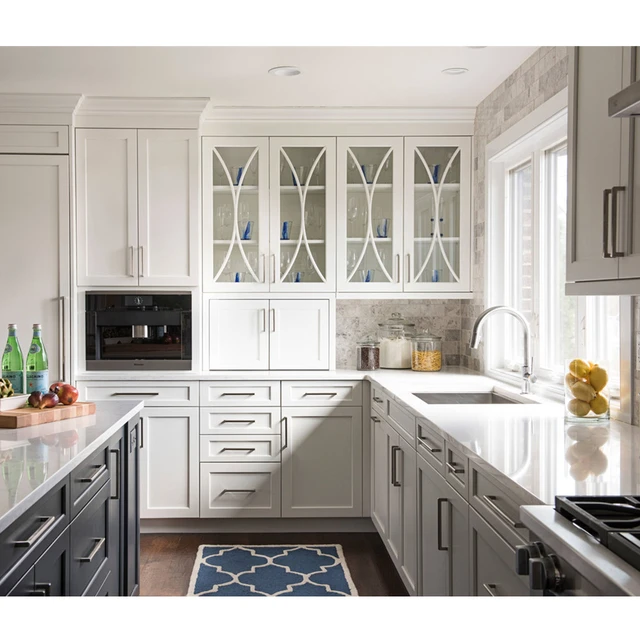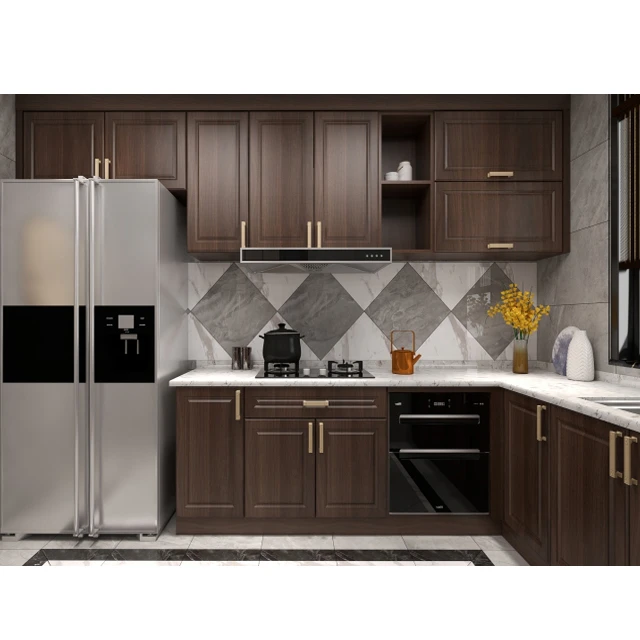 Introduction:
Introduction:
Using a primer is a crucial step when painting kitchen cabinets. It helps create a smooth and durable surface, promotes paint adhesion, and enhances the longevity of the paint finish. In this comprehensive article, we will explore the importance of using a primer for kitchen cabinets, the types of primers available, and the step-by-step process of using primer to achieve professional results.
Importance of Using Primer for Kitchen Cabinets:
Surface Preparation: Primer helps prepare the surface of the kitchen cabinets, allowing the paint to adhere evenly and smoothly.
Enhanced Paint Adhesion: Primer creates a strong bond between the paint and the cabinet surface, reducing the chances of peeling or chipping.
Stain Blocking: Primer can help prevent stains, discoloration, and bleed-through from previous finishes or wood tannins.
Improved Paint Durability: A primer acts as a protective layer, enhancing the durability and longevity of the paint finish on kitchen cabinets.
Types of Primers for Kitchen Cabinets:
Oil-Based Primer: Oil-based primers are known for their excellent adhesion and stain-blocking properties. They are suitable for cabinets with stains or wood tannins.
Water-Based Primer: Water-based primers are easy to use, have low odor, and dry quickly. They are suitable for cabinets that do not have significant staining or tannin issues.
Shellac-Based Primer: Shellac-based primers offer superior stain blocking and sealing properties. They are especially effective for cabinets with heavy stains or odors.
Selecting the Right Primer:
Substrate Compatibility: Consider the material of your cabinets (wood, laminate, or veneer) and choose a primer that is compatible with the surface.
Stain Blocking Properties: If your cabinets have stains or discoloration, opt for a primer with excellent stain-blocking capabilities.
Odor and VOCs: If you have sensitivity to odors or prefer low VOC (volatile organic compound) products, choose a primer with minimal odor and low VOC content.
Step-by-Step Process of Using Primer for Kitchen Cabinets:
Preparation: Clean the cabinets thoroughly, removing grease, dirt, and previous finishes. Sand the surface lightly to promote primer adhesion.
Masking and Protection: Cover surrounding surfaces, countertops, and appliances with plastic sheets or drop cloths to protect them from primer overspray or drips.
Mixing and Application: Stir the primer well before use. Apply a thin and even coat of primer to the cabinets using a paintbrush or roller, following the wood grain.
Drying and Sanding: Allow the primer to dry according to the manufacturer’s instructions. Lightly sand the primed surface with fine-grit sandpaper to smooth out any imperfections.
Additional Coats: If necessary, apply a second coat of primer for enhanced coverage and adhesion. Follow the drying and sanding process between coats.
Tips for Using Primer on Kitchen Cabinets:
Ventilation: Ensure proper ventilation in the kitchen area by opening windows or using fans to minimize the odors associated with primers.
Proper Cleanup: Clean brushes, rollers, and other tools immediately after use, following the instructions on the primer label.
Time and Temperature: Allow sufficient drying time between coats and ensure that the temperature and humidity levels are suitable for proper primer adhesion and drying.
Choosing a Paint Color:
Primer-Tinting: Some primers can be tinted to a specific color, which can help improve color coverage and reduce the number of paint coats required.
Paint Compatibility: Select a paint that is compatible with the primer you have used to ensure optimal adhesion and durability.
Additional Considerations:
Professional Assistance: If you are unsure about the process of using primer or want to achieve flawless results, consider consulting a professional painter or contractor.
Quality of Primer:Invest in high-quality primer to ensure better coverage, adhesion, and long-term performance.
Conclusion:
Using a primer is a vital step when painting kitchen cabinets, as it provides numerous benefits such as improved paint adhesion, stain blocking, and enhanced durability. By selecting the right primer for your cabinets and following the proper application process, you can achieve professional results and enjoy a beautiful and long-lasting paint finish. Prioritize the use of primer to ensure the success of your kitchen cabinet painting project and transform your kitchen space with confidence.



